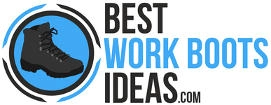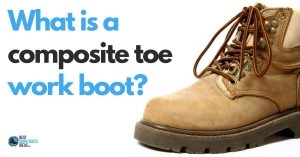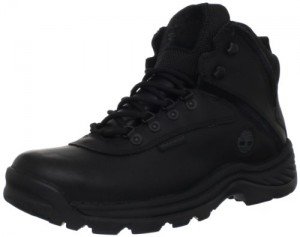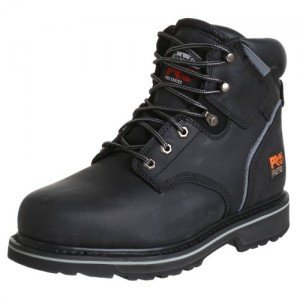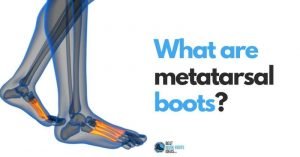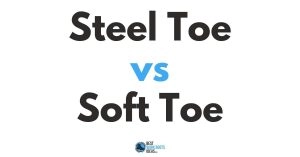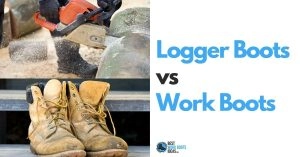How Should Work Boots Fit? 9 Things you Need to Consider Before Purchasing Your Next Pair
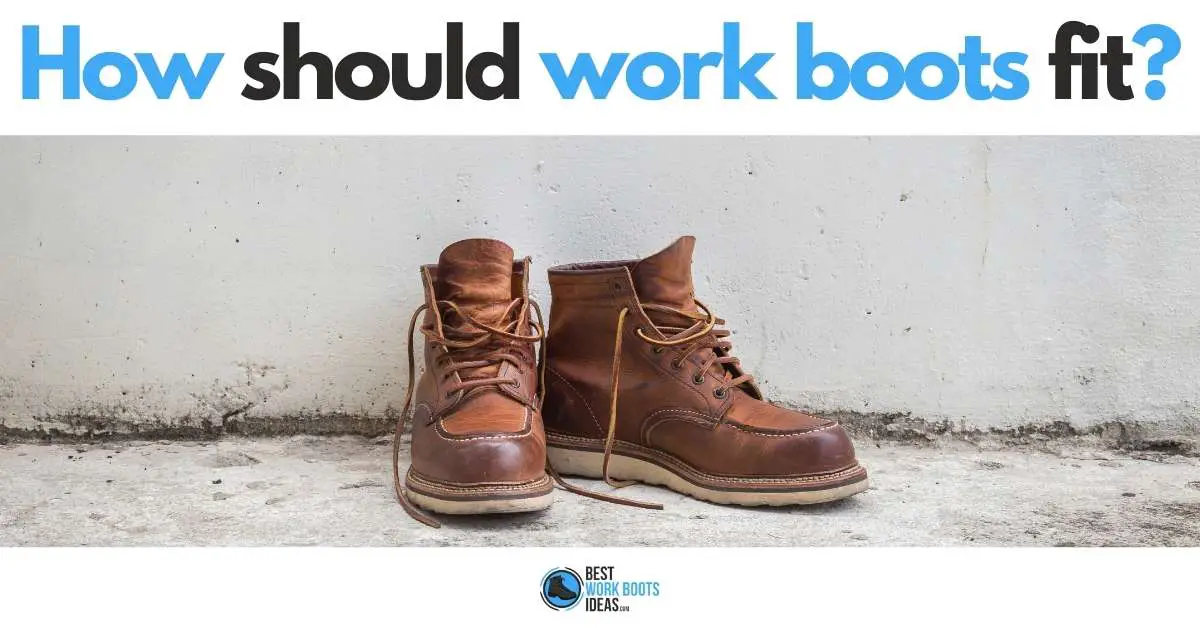
Boots are like any piece of clothing, they’re only as good as they fit.
A poorly fitted work boot can give you the illusion of safety while you’re actually doing damage to your foot.
Before it’s complete this article will have answered the question that probably brought you here, “how should work boots fit?”
As I prepared to research this article, I primarily expected to get resources from boot and shoe manufacturers.
What I found surprised me, because the people discussing the topic of poorly fitted footwear were mostly doctors and researchers.
From academic articles, to independent podiatrists, to trade organizations, it seems that most of the people concerned with getting you to find the right fit are actually those who have to deal with problems associated with the wrong fit.
When boots don’t fit properly, they don’t feel good; that’s no secret.
The many health problems related to ill-fitted footwear is less known.
Truthfully, I wasn’t aware of many of the issues myself before doing the research for this article.
It has been one of those moments where I’m not just writing to teach others, I’m also writing to learn.
I knew pain, and comfort, but I didn’t know the things to look for when looking for a new pair of work boots.
I worked for a number of years doing carpentry, so work boots were part of my daily grind.
For even longer than that, I’ve had comically flat and wide duck-feet that required me to purchase orthopedic footbeds (insoles) for all my shoes and boots.
This made buying footwear a pain, but never something I would try to rush through; the actual physical pain of getting the wrong shoes made life downright unenjoyable.
There was a point, however, where I didn’t know that I needed something different.
It was only by chance that a friend of mine who frequently ran noticed something and gave me advice that has made my life better ever since.
I’m hoping that some of you will read this article, review your own experiences, and discover that you can feel better than you have been.
Everyone knows their boot size, but one number can’t tell you everything you need to know when trying to find the perfect fit.
In this article we’ll discuss the different variables of boot fit, how it should feel, and things you can do to make the process as easy as possible.
With all that in mind, let’s get into the first thing to help you figure out how your work boots should fit, a description of how they should feel and perform.
Contents
How Should Work Boots Feel?
The quickest and easiest way of describing this is by going through parts of the foot, boot, and aspects of a fit.
That way if you’re just curious about something particular, jump to that and keep it moving with the rest of your day.
For those who want to know the full scope, make your way down the list.
To help you see the various variables in measuring a foot, check out this fantastic diagram from Jessica Dobson featured in her article in Ergonomics.

Comfort
It goes without saying that any type of safety shoe should be as comfortable as possible.
Sadly, even with today’s technology discomfort still remains high.
In an article by Applied Ergonmics, 45% of men found their safety footwear uncomfortable compared to their regular shoe.
Women faired worse with 65% feeling uncomfortable.
‘Fit’ and ‘comfort’ both go hand in hand, so the hope is that a work shoe that has a perfect fit will also be comfortable too.
Read on and lets see.
Heel
Your heel should rest within the boot’s heel snugly, but not pinching.
As you’re putting the boot on, you’ll feel some resistance at about halfway on, at which point the resistance will decrease as your toes move forward and your heel moves down.
Your heel should not ‘slip’ (move up as you walk) more than an ⅛” of an inch.
Any more than ⅛” and I advise picking a different pair.
⅛” is small enough that as you break the boots in this will correct itself.
I should note, I’ve found new boots that had no heel slippage, so it is possible to get a pair with 0” of slippage from day one.
Don’t feel heel pinch or slip and tell yourself that’s just how new boots are.
They may have been in the past, but that doesn’t mean they have to be that way with your new pair.
Arch
The arch of your boot should just go beyond making contact with the arch of your foot.
Slightly supporting, and mirroring the shape of your arch.
Proper arch support has been determined to limit plantar fasciitis.
I can tell you that proper arch support prevents foot, knee, and hip pain in my anecdotal experience
In terms of construction, think of receiving a piece of wood being ripped on a table saw.
From the perspective of weightlifting, think of spotting someone as they lift.
In both those examples you’re not trying to lift the object, nor let it sag, you want to give slight support to keep it in a level position.
If you’re a person that needs specialized arch supports, you need to make sure that the boots you’re looking at have enough room for your arch and your foot.
Don’t buy the boots and find out later they’re not big enough
Instep (Top of Foot)
The instep should hug your foot snugly, but not tight.
It’s possible you’ll find boots that fit great at the heel but develop a gap at the instep.
Sometimes the boot feels great near your toes, but the tongue disappears into the boot closer to the ankle.
You never know how
If you find yourself pulling the laces tighter on your boots to make them ‘fit,’ then they dont fit.
In this example, the boots aren’t really supporting you and can lead to health risks such as lace bites.
If it seems like it took a lot of effort to tie the boots or that the boots are tied to your foot but aren’t on there, move on to another pair.
You want the instep to support you, not restrict you.
Toes
Toes should have anywhere from ½” to 1” of room before touching the front of your boot, the low end of that range is roughly a thumb width worth of room.
What’s often ignored with toes is how much width they have.
If they’re jammed into one another like sardines or, even worse, overlapping so you can fit into the boot, look for a wider boot!
Failure to do so can result in pinched nerves or other serious medical conditions.
The most important thing is that you try on both boots before deciding that they fit your toes.
It happens that human feet are not identical and one foot may be larger than the other.
Let your toes move, breath, and help make your work easier by giving them the room they need.
Width (Super Important)
The sides of your feet should feel contact but not pressure, and your toes should never have to relocate.
The width of a work boot is routinely ignored by many as they look for a new pair.
Getting a pair of boots that’s (usually) too narrow can result in discomfort in the best case scenario, and result in numbness and nerve damage in severe and long-term cases.
We include length and width with every measurement we take, so why don’t we do the same for our feet?
Crunching your feet into boots that aren’t wide enough for your feet doesn’t mean they fit.
That pain just means you’re putting unnecessary stress on a body part you’ll want functional till your last day on earth.
To ensure a proper fit, align the ball of your foot with the widest part of your safety boot.
It doesn’t matter what kind of safety footwear, toe box or toe shape you have.
If the width isn’t correct, the rest will fail.
The fit for steel toe and composite toe should ideally be the same as a pair of boots without the safety cap.
Before Getting to the Store
Forget Your Size
Forget your boot size, trust your feet!
Just because you’ve been buying work boots in a particular size for years doesn’t mean that they’re right for you.
Don’t assume your feet are the same size as when you left high school.
Many factors, such as age, height, weight, foot conditions all have an impact on the shoe size.
Walk into the store with the intention of getting the best gear for the job, not simply getting a chore done.
Many people want buying boots to be a 10 minute process that requires nothing but a size, brand, and money.
You can do this, but the chances are you’re going to be paying for your lack of patience the entire time you own those boots.
This is ironic, because most of the people buying boots have the greatest levels of concern and patience for the work they need those boots to do!
Consider your boots as a crucial tool that allows you to produce top notch work for your business, boss, or union.
Everyone reading this has probably rolled their eyes at the guy who has said, “let’s hurry up and get this done so we can get out of here.”
You’ve wished he would take the necessary steps to deliver good workmanship.
Don’t rely on your memory, rely on what you feel the day you’re going in there. Things change, and so do feet!
Discover Your Arch
Get your foot checked at an orthopedic store or podiatrist’s office to find out if you will benefit from getting additional arch support.
It’s impossible to know what kind of work boot will fit you best if you’re not aware of what level of arch support you need.
It may be that your foot is just fine and you don’t need any additional help.
It also may be the case, as it was with me, that you’ve been unnecessarily walking around in pain without even noticing it.
Be Teachable, Be Patient
Prepare to ask for help and ask questions.
f you ask for the sizing factors you’re looking for and explain the issues you’re having with the boots the sales associate is bringing you to try on, you might just get the pair you never would have imagined.
Simply walking in the store and saying “I want brand X and I never wear brand Y” is not an effective strategy.
If you seek a guide instead of a servant when looking for your new work boots, you might be better off than running the show alone.
With patience, a little research, and a good sales associate, you should have no problem finding a pair of work boots that feels like they were built for you.
If you’re buying online, you can use the tips mentioned above.
Just don’t forget to check the retailer’s return policy in case your safety shoes don’t fit.
Once you’ve purchased your boots, you might want to learn how to break into them.
